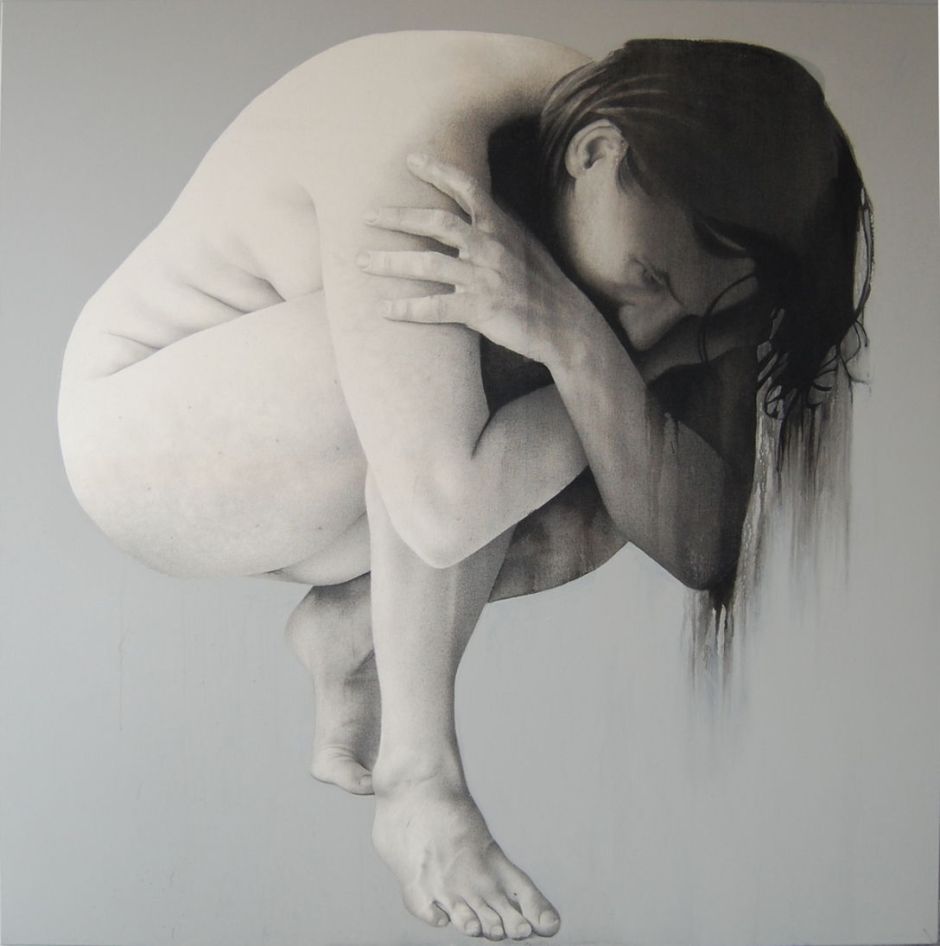In 1947, Sam Golden and Leonard Bocour made art history when they produced the first major new paint for more than five hundred years, acrylics. Traditional oil paints were the mainstay medium used by professional painters in Europe from the Renaissance until the late twentieth century, a period of well over half a millenium. Although other media have been widely and successfully used, until recently the near-infinite flexibility of effects and painting styles made oil paint dominant. Over that period, much effort has been expended getting oil paint to dry more quickly, and discovering how to create stable paint layers using principles such as the ‘fat over lean’ rule.
In the 1930s, Otto Röhm invented a new synthetic resin formed from acrylate molecules, dubbed acrylic resin. This first became available during that decade, and was steadily developed into paints during the 1940s. Their biggest market was in general-use commercial paints, particularly for the outside of buildings.
In the late 1940s, Leonard Bocour and Sam Golden developed and brought to market Magna paints, in which these acrylates were suspended in mineral spirits to form an emulsion. Golden later developed a paint based on water, which lives on in his company Golden Artist Colours. In the 1950s they were joined by Liquitex, then in the 1960s by Rowney’s Cryla paints. Acrylic paints were starting to rival oils.
In modern acrylic paints, the acrylics themselves are the binder, with water as its diluent. Wet paint is readily removed from brushes and skin using soapy water, making the use of organic solvents largely unnecessary except when dealing with dried paint. This is far more convenient than working with oils, with their toxic organic solvents for cleaning.

Oil paints are still to a degree rooted in alchemy; although modern commercial products are sophisticated combinations of natural and synthetic ingredients, using them and controlling their visual effects owes as much to tradition as it does to industrial chemistry. Acrylics are thoroughly modern in their formulation and use, carefully packaged blends of polymers with surfactants, plasticisers, dispersants, defoamers, stabilisers, and of course pigments.
Some artists still grind their own oil colours, and many oil painters use traditional media and resins to control their properties. Acrylics are too chemically complex for artists to prepare themselves, although the use of special media to alter their handling and properties has become popular.

Early acrylics were fast to dry, making them excellent for painting in layers, but quite unsuitable for techniques such as ‘wet in wet’ which rely on the interaction of wet paint on the ground. Hard edges were easily achieved, as were bright if not garish colours, but effects such as sfumato were impossible in those early days.

Over the last fifty years, formulation of acrylic paints and their media have not only resulted in products which remain ‘open’ for longer, but have let painters determine body, flow, finish, and other physical properties of the paint. Manufacturers even have fine control over the size of acrylic particles within the paint emulsion, which enables this flexibility, and some offer acrylic inks which are far more durable and robust than traditional inks.



Acrylics are also able to adhere to a wide range of grounds. Professional artists often continue to use prepared and stretched canvas, but acrylic sizing is necessary on that and some other grounds to prevent discolouration from the ground, known as Support-Induced Discolouration (SID).
There are still remaining issues in using acrylic paints. Many oil paintings show evidence that at some stage part of the paint layers have been scraped off to enable the artist to repaint sections in pentimenti; this isn’t normally possible with acrylics, which tend to be overpainted without scraping, as the latter strips the entire paint layer and may damage the ground too.

Experience from accelerated ageing of acrylic paints suggests that today’s acrylic paintings should last better than oils. However, the first acrylic paintings are still well under a hundred years old, making it far too soon to arrive at any definitive conclusion.

In the latter half of the twentieth century, painters have gone from alchemy to modern industrial chemistry. It has been quite a transformation.

